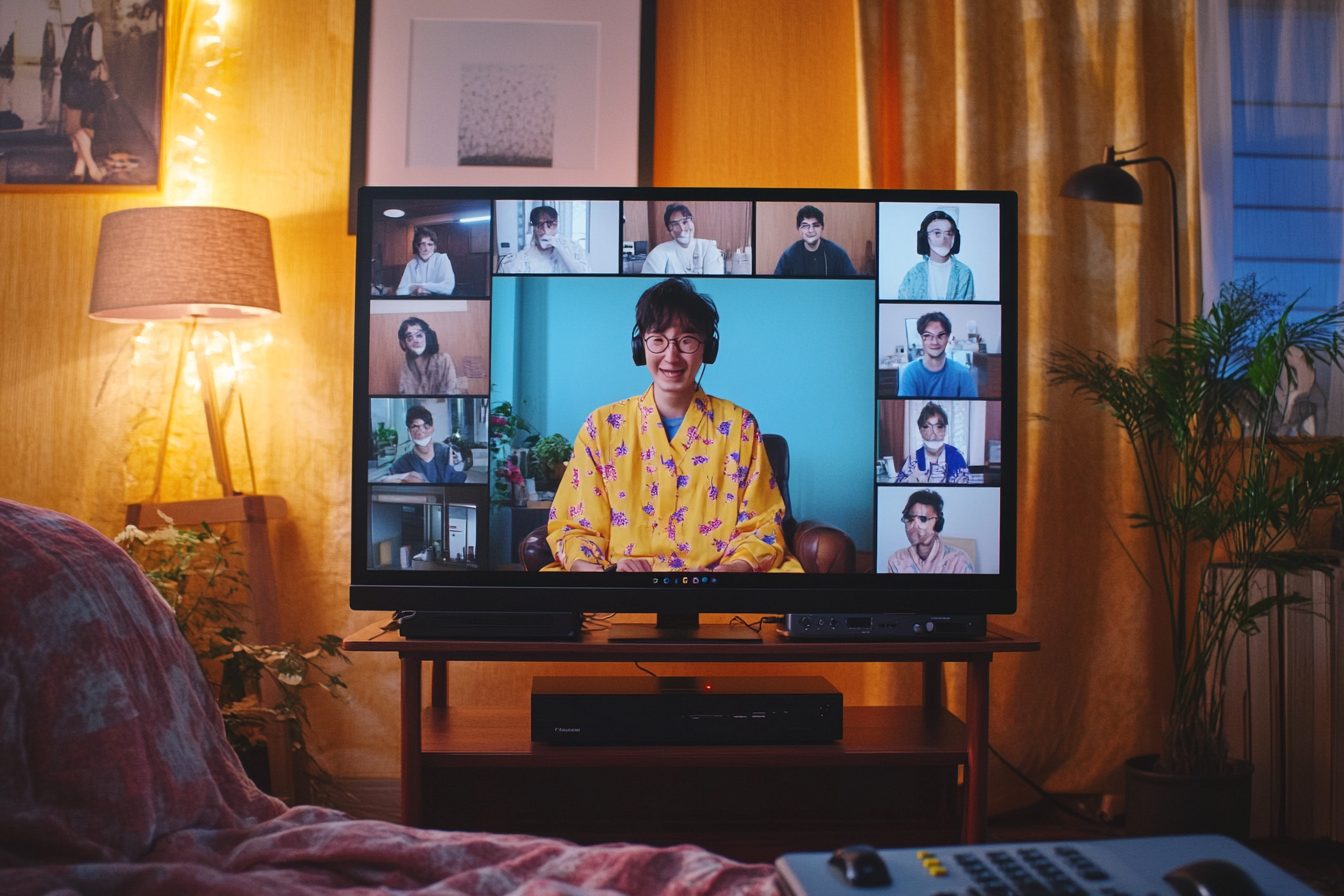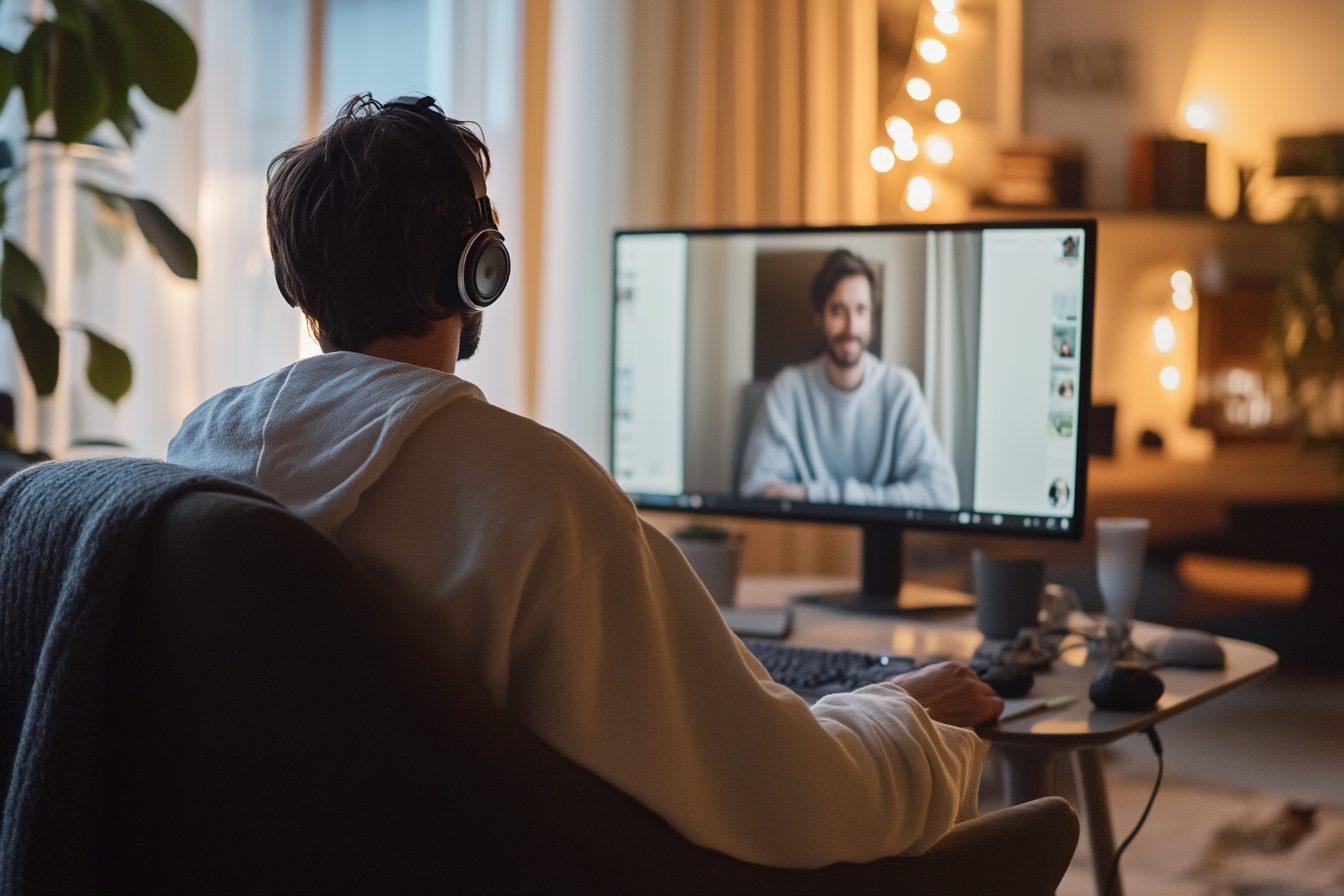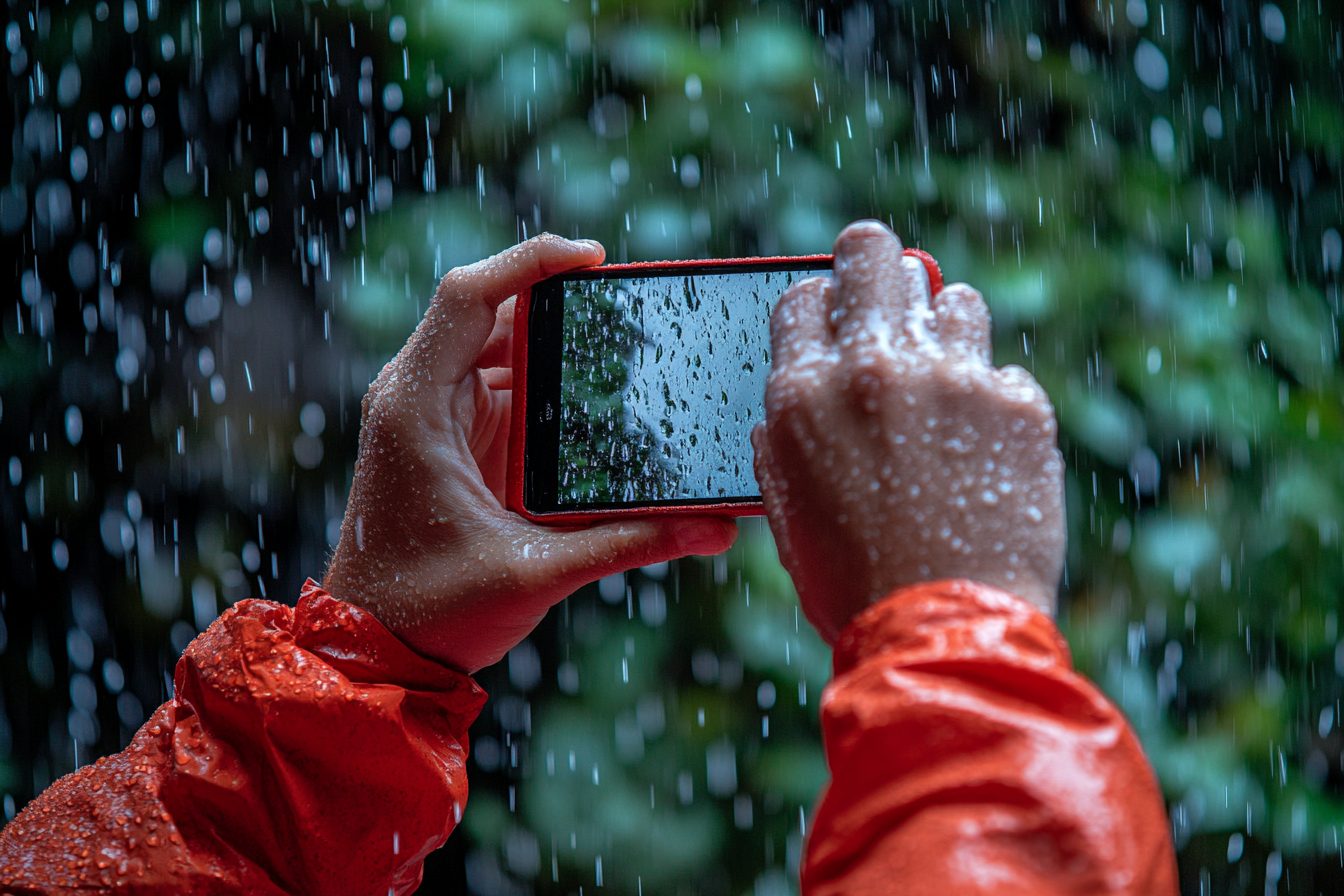My morning ritual has shifted into something my younger self wouldn’t recognize. At the start of the day, I slowly shuffle to my bathroom, brush my teeth, and then consider my day’s most important decision: Which parts of me will be visible to the world outside?
It’s a style I’ve coined the Zoom Mullet—business up top, where the camera catches most of my torso, and beneath is where I can let comfort take over. It’s more of sad comfort attire because I find myself waist down in slouching sweats. I have mastered the new professional outfit: seeing my comfy, pre-pandemic self behind the scenes.
That hasn’t always been me. When I was deep in corporate tech, I was the one who turned up in tailored pants, pressed. Polished shoes. Stored away carefully were three separate briefcases for different types of meetings. Rugged dresses were simply part of the game, so I had a cover-all for each of them.
Then came the beginning of 2020, and all spiraled back to us being rectangular heads in digital boxes. Change is the great equalizer. Models of sudden need: Forget about trousers heavy with fabric.
The first video call I attended from home was an absolute disaster. I hadn’t figured out the etiquette in this new epoch of life. When I stood at mid-meeting to fetch a document, I inadvertently flashed my SpongeBob SquarePants pajama bottoms to the entire product dev team. The CMO and a $300 per hour external consultant also joined the call. A moment of silence for my dignity.
As embarrassing as the ordeal was, I adapted. I developed a moderate system: stunning shirt, decent hair, reasonable setting, and absolute creative freedom everywhere else. The bottom half of my body was in a confined casual Friday zone.
My wife was quicker on the uptake. Equal parts amused and horrified, she said, “Are you seriously wearing Homer Simpson pajamas and an interview blazer?” I was and had 10 minutes to address my board. So I gave her my usual explanation: a reserved world filled with tiny freedoms. Her response: a frustratingly accurate take on my inner laziness.
The strangest thing about Zoom Mullet life isn’t how mismatched one’s outfit can be—it’s how rapidly it evolved so fast. There are now shirts in my closet that I refer to as “video call shirts” because nowadays, they are evaluated exclusively based on their presentation from a chest up to shoulders, within the bounded view of a webcam. My dresser also has the bottom drawer which contains “lower half clothings,” a collection of sweatpants, gym shorts, and pajama bottoms of varying degrees of looseness.
During quarter-end reviews last year, my crowning achievement came when I gave a 30-minute presentation on digital engagement metrics. I used a crisp blue button down and a subtly patterned tie, paired with plaid flannel pajama bottoms my daughter gifted me for Christmas, so they are technically not worn under garments. Fuzzy slippers shaped like grizzly bear paws completed the look. Compliments were showered on my professionalism. If only they knew I was part grizzly bear.
The psychological impacts of this dual life are a lot more intricate than you may consider. There is something almost empowering about the understanding that one half of you is professional and the other half is comfortably and defiantly disengaged. It is a physical embodiment of how many of us feel about work — half of us actively engaged while the other half wishes to be back in bed.
This doesn’t pertain solely to comfort, though. The Zoom Mullet serves as a silent recognition of the facade that exists in professional settings. We’ve always acted in the workplace, but now with everyone connected through video calls, there is a cartoonish sense of performance. People have become players on a virtual set, obfuscated only from the waist down, creating the semblance of complete corporate attire.
Now I am seeing the signs of this in other people too. The telltale signs include a slight straightening of shoulders while reaching for off camera items. The sneaky muffled foot taps before a participant swiftly mutes their microphone. The look of exasperated relief shared by two colleagues who, in the middle of the conversation, proclaim “home office dress codes” while pajama bottoms are their true professional consensus.
My best Zoom experience is during a high-stakes negotiation with a prospective client. I was in the middle of advocating for the value of our services at a premium price when my cat decided to check out the strange warmth radiating from my laptop. As I tried to keep my stern voice on for the ROI projections monologue, Pixel jumped onto my knee and sat between me and the camera, exposing his backside to the whole meeting. I offered my apologies over and over again, but the client, a tie-and-suit-wearing financial services executive, could not contain his laughter. “My dog did the same thing yesterday,” she confessed. “I was in gym shorts with this blazer on and he brought me his leash.” We ended up closing the deal on that very day.
From time to time, the facade reveals itself in different ways. For example, during a heat wave last summer, I answered a call while on my backyard patio. I had on a professional shirt, tie, and Airpods while sporting swim trunks beneath the camera frame. During the meeting, a neighborhood child accidentally threw a water balloon that hit my laptop. So, as I jumped up in surprise, my entire team got an eyeful of my beach-ready lower half. While no one directly said anything, our Slack the next day had a swimmer emoji, signifying a new custom emoji: A suit jacket and swim trunks.
Unlike other cases, with the dishonest Zoom Mullet, there lies an odd honesty. The truth blurs: we have crossed the line into personal territory, and in return, personal comfort has breached work norms. It is a mute form of defiance that gives up the confines of home for physical comfort.
This setup would puzzle my younger self. Can you imagine a time in the 90s when professional advancement would entail wearing a half-outfit while sitting before a screen populated with peers donned in similar halves? Sounds like a very odd version of the future, right? On top of that, the absurdity of forgetting to unmute ourselves before talking, accidentally sharing our screencasts of private browser tabs, or having to tell one another “you’re frozen” or “we can’t hear you” turns the whole phenomenon into a blend of weird comedic theater.
The Zoom Mullet does not have universal appeal though. I have one colleague who continues to baffle most of us by putting on full business wardrobe for every call. Blatantly ignoring the fact that he lives alone and walks from his bedroom to a home office, he Just puts on a full suit. “It’s about the mindset,” he defends. While I appreciate his sense of commitment, I do suspect he’s pulling our leg. Home desks do not have dress shoes placed on them.
The Zoom Mullet continues to exist, even if the pandemic is considered to be over. Video calls are still a part of everyday professional life and will remain that way for a long time. I am in the weird position of having to decide whether or not to ‘dress up’ based on whether the meeting is in-person or over a screen. “For Tuesday, I will be needing complete professional dress; Wednesday, I can get by wearing an oxford shirt and sweatpants.” While doing laundry, these are thoughts that come to mind.
I am left wondering how this affects our perception of self authenticity. Is prioritizing comfort a more accurate representation of honesty, and upholding the full professionalism image a sign of lacking genuineness? The answer I have reached after three years of Zoom Mullet life is both, and at the same time, all of it.
After attending an all-hands meeting at our actual office, I was left feeling strange while putting on meeting pants. They felt overly constricting and to an extent, ridiculous. I found myself longing for the comfort that accompanies my home office attire. At the same time, putting on proper clothes was nice because it signified being physically present with colleagues. No mute, no camera off, and no surrendering to the feline exhibitionists displaying their derrière to the CEO.
During the meeting, something felt off: the Zoom Mullet has integrated itself into my experience of in person work as well. One part of me was present in the meeting, listening, taking notes, and asking relevant questions. The other half was mentally lingering at home, contemplating if anyone would really mind if I removed my shoes while sitting at the conference table.
This type of attire cannot just be labelled as “outfit choice.” It can be described as a state of mind while embodying one’s relationship with work. As a society we are disengaged and detached, professional yet informal, distant yet present,. In other words, we are only devoting 50 percent of ourselves to work and in this case, we are speaking about our clothing.
So, standing in front of the closet the next day, I ask myself what to wear. Booking a meeting means picking a shirt and making sure you are only presentable from the waist up. This grants one the ability to appear authoritative and competent mauled by the need to wear comfort from the waist down. Societal standards talk about it as an offense since it’s not entirely authentic nor fully false. Such is this day’s reality, which exists somewhere in the disorderly and contradictory mess.
Business up top and pajamas down below is the new dress code. The Zoom Mullet fashion stays.







